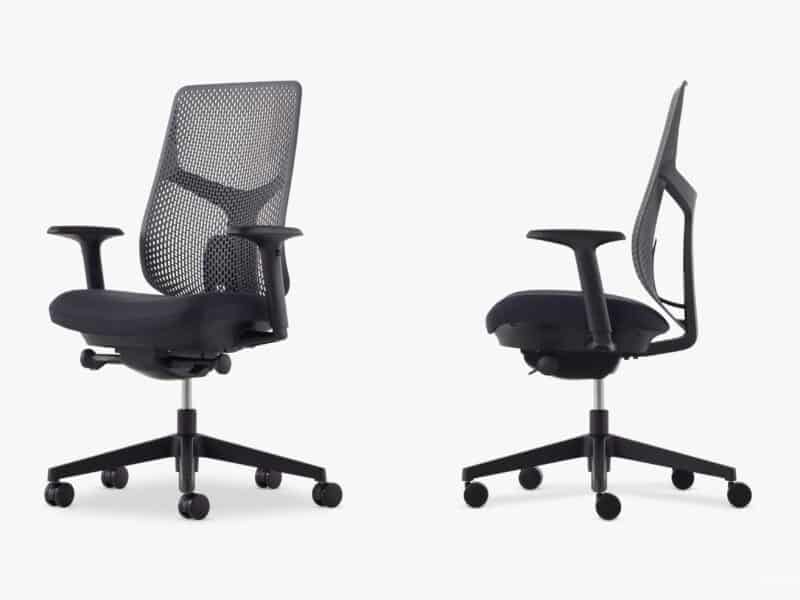
Whether you already suffer from back problems, or are keen to prevent any problems occurring, investing in an ergonomic back chair for your office or working environment could make all the difference.
Here’s a useful guide to getting the right fit and size for your ergonomic chairs.
Back problems are one of the most common complaints affecting office workers who spend hour upon hour sitting at their desk and is contributing factor in many days off work due to ill health.
Sitting comfortably and maintaining a good posture is one of the best ways of preventing back problems.
Plus, good posture can also reduce the risk of other desk-related health issues, such as RSI or carpal tunnel syndrome.
Some chairs used in offices and at desks are the wrong height for the desks and don’t promote a good posture, so it’s no wonder aches and pains occur for workers.
It’s also not helped that many chairs and desks aren’t adjustable, so you’re stuck with them as they are.
Ergonomic chairs, on the other hand, are designed with your health and comfort in mind, so work to reduce any problems.
Finding the Perfect Fit of Ergonomic Chair
Office shops and specialist furniture stores generally stock some ergonomic chairs, so they’re a good place to look in the first instance.
Bog standard office chairs are usually quite cheap, but you’ll have to pay a bit more for one which has an adjustable seat and arms. Ideally, a chair where the height can be altered and where the back can either be fixed in place or allow you to lean back is a good option.
Leaning forward frequently puts strain on your back, whereas the occasional time leaning backwards in a chair is beneficial.
Always look for a chair which promotes a good posture. A good sitting position is one in which:
- Your feet are always flat on the floor. If they don’t reach the floor, then a footrest or even a phone directory can be used to put your feet on.
- Your hips are at a slightly higher level than your knees.
- Your shoulders are relaxed.
- Your forearms are parallel to the floor and at a right angle to your upper arms.
If possible, try out the various chairs available, so you can get a first hand idea of how you fit in them and how they feel.
Some chairs, for example, may be quite compact, others a bit wide, but trying them out can eliminate any no-goers.
If budget isn’t too much of an issue, or you really want to do the best for your back, then there are some top models on the market which offer the perfect fit.
Many of the top companies will design and produce a chair with your individual measurements and requirements in mind.
The basic parts of the chair will be the same, but the individual elements will be minutely measured so it provides the best comfort and fit for you.
If you’re able to go for this kind of option, then you can be guaranteed your chair will fit you – although of course, it may not be ideal if others want to share the chair.
Ergonomic seating is definitely the way to go if you want to ensure comfort and good health and, for offices, it may even help productivity and keep the workers happier.


